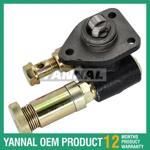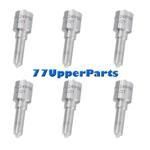Information injection-pump assembly
BOSCH
9 400 610 219
9400610219
ZEXEL
101692-3451
1016923451
KOMATSU
6206711360
6206711360
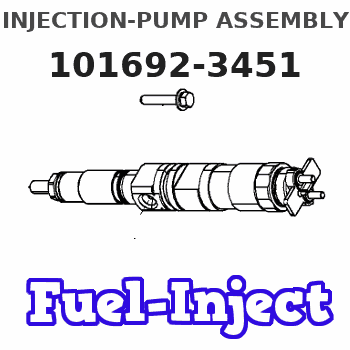
Rating:
Service parts 101692-3451 INJECTION-PUMP ASSEMBLY:
1.
_
5.
AUTOM. ADVANCE MECHANIS
6.
COUPLING PLATE
7.
COUPLING PLATE
8.
_
9.
_
11.
Nozzle and Holder
6207-11-3100
12.
Open Pre:MPa(Kqf/cm2)
19.6{200}
15.
NOZZLE SET
Cross reference number
BOSCH
9 400 610 219
9400610219
ZEXEL
101692-3451
1016923451
KOMATSU
6206711360
6206711360
Zexel num
Bosch num
Firm num
Name
Calibration Data:
Adjustment conditions
Test oil
1404 Test oil ISO4113 or {SAEJ967d}
1404 Test oil ISO4113 or {SAEJ967d}
Test oil temperature
degC
40
40
45
Nozzle and nozzle holder
105780-8140
Bosch type code
EF8511/9A
Nozzle
105780-0000
Bosch type code
DN12SD12T
Nozzle holder
105780-2080
Bosch type code
EF8511/9
Opening pressure
MPa
17.2
Opening pressure
kgf/cm2
175
Injection pipe
Outer diameter - inner diameter - length (mm) mm 6-2-600
Outer diameter - inner diameter - length (mm) mm 6-2-600
Tester oil delivery pressure
kPa
157
157
157
Tester oil delivery pressure
kgf/cm2
1.6
1.6
1.6
Direction of rotation (viewed from drive side)
Right R
Right R
Injection timing adjustment
Direction of rotation (viewed from drive side)
Right R
Right R
Injection order
1-5-3-6-
2-4
Pre-stroke
mm
3.6
3.55
3.65
Rack position
Point A R=A
Point A R=A
Beginning of injection position
Drive side NO.1
Drive side NO.1
Difference between angles 1
Cal 1-5 deg. 60 59.5 60.5
Cal 1-5 deg. 60 59.5 60.5
Difference between angles 2
Cal 1-3 deg. 120 119.5 120.5
Cal 1-3 deg. 120 119.5 120.5
Difference between angles 3
Cal 1-6 deg. 180 179.5 180.5
Cal 1-6 deg. 180 179.5 180.5
Difference between angles 4
Cyl.1-2 deg. 240 239.5 240.5
Cyl.1-2 deg. 240 239.5 240.5
Difference between angles 5
Cal 1-4 deg. 300 299.5 300.5
Cal 1-4 deg. 300 299.5 300.5
Injection quantity adjustment
Adjusting point
A
Rack position
9.9
Pump speed
r/min
1250
1250
1250
Average injection quantity
mm3/st.
31.6
30.6
32.6
Max. variation between cylinders
%
0
-2.5
2.5
Basic
*
Fixing the lever
*
Injection quantity adjustment_02
Adjusting point
-
Rack position
10.5+-0.
5
Pump speed
r/min
400
400
400
Average injection quantity
mm3/st.
10.5
9.5
11.5
Max. variation between cylinders
%
0
-15
15
Fixing the rack
*
Remarks
Adjust only variation between cylinders; adjust governor according to governor specifications.
Adjust only variation between cylinders; adjust governor according to governor specifications.
Test data Ex:
Governor adjustment
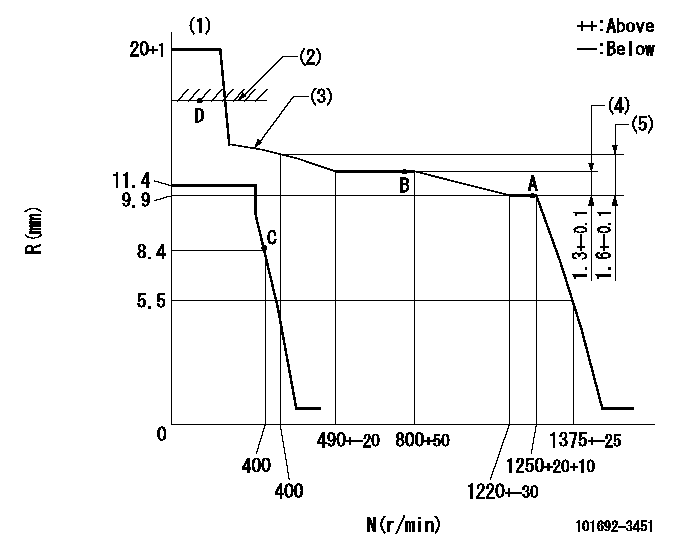
N:Pump speed
R:Rack position (mm)
(1)Target notch: K
(2)RACK CAP: R1
(3)The No. 1 torque control spring must have no set force.
(4)Rack difference between N = N1 and N = N2
(5)Rack difference between N = N3 and N = N4
----------
K=16 R1=(17.5)mm N1=1250r/min N2=800r/min N3=1250r/min N4=400r/min
----------
----------
K=16 R1=(17.5)mm N1=1250r/min N2=800r/min N3=1250r/min N4=400r/min
----------
Speed control lever angle
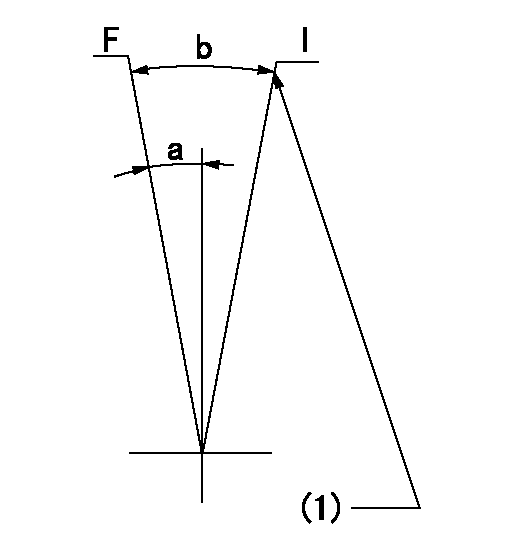
F:Full speed
I:Idle
(1)Stopper bolt setting
----------
----------
a=(23deg)+-5deg b=(27deg)+-5deg
----------
----------
a=(23deg)+-5deg b=(27deg)+-5deg
Stop lever angle
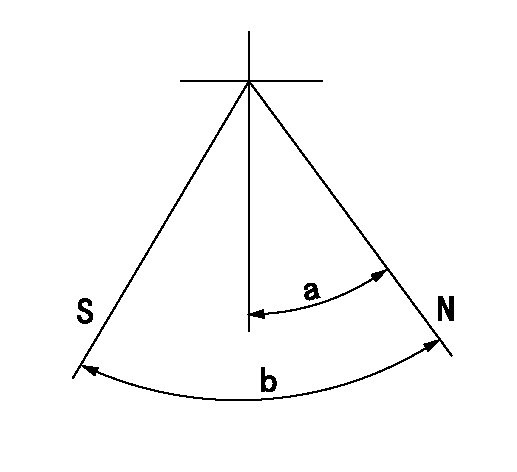
N:Pump normal
S:Stop the pump.
----------
----------
a=26.5deg+-5deg b=53deg+-5deg
----------
----------
a=26.5deg+-5deg b=53deg+-5deg
Timing setting
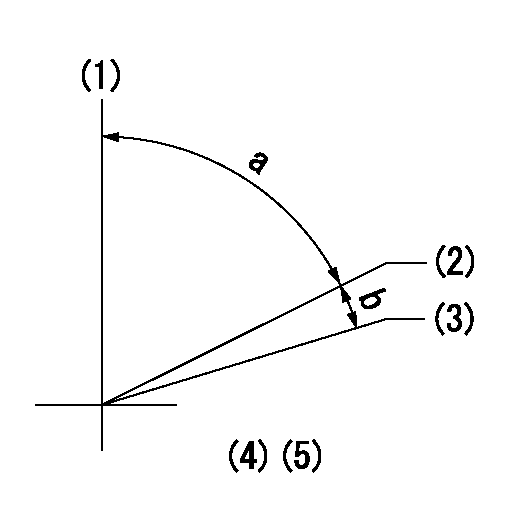
(1)Pump vertical direction
(2)Position of key groove at No 1 cylinder's beginning of injection
(3)Stamp aligning marks on the pump housing flange.
(4)-
(5)-
----------
----------
a=59deg36min+-3deg b=0deg24min+-30min
----------
----------
a=59deg36min+-3deg b=0deg24min+-30min
Information:
Your truck/engine may not have the same or all of the gauges as shown in the illustrations. The illustrations shown are of typical gauges.Gauges provide a "look" inside the engine. Be sure they are in good working order. You can determine what is the "normal" operating range by observing your gauges over a period of time.Noticeable changes in gauge readings are an indication of potential gauge or engine problems. This also applies to gauge readings that have changed significantly but are still within specifications. The cause of any sudden or significant change in the readings should be determined and corrected. Contact your Caterpillar dealer for assistance as needed.
If no oil pressure is indicated, stop the engine. Engine damage can result.
Oil Pressure - Typical oil pressure range is 30 and 45 psi (207 and 310 kPa) (running at rated engine speed, with SAE 15W-40 oil, at operating temperature). A lower pressure is normal at low idle. Water Temperature - Typical water temperature range is 189° to 208°F (87° to 98°C). Maximum allowable temperature is 216°F (102°C) with the cooling system pressurized. Somewhat higher temperatures may occur under certain conditions. Ammeter - Indicates the amount of charge or discharge in the battery charging circuit. Typical operation of the indicator should be slightly to the positive (right) side of "0" (zero).With the engine running, during normal operation, if the indicator is constantly to the negative (left) side of "0" (zero) or shows excessive charge, have the charging system checked for malfunction.
Do not exceed 2300 rpm in any situation.
Tachometer - Indicates engine rpm (speed). The engine can be operated at high idle without damage, but should not be allowed to overspeed. Overspeeding when downshifting, going downhill, etc., can result in serious damage to your engine. Fuel Level - Indicates fuel level in the fuel tank. Electrically operated, it registers only when the key switch is ON.
A drop in fuel pressure usually indicates a dirty or plugged fuel filter.
Fuel Pressure - Indicates fuel pressure to the unit injectors. The indicator (if equipped) should register in the NORMAL (green) range. Typical fuel pressure at low idle is 60 psi (410 kPa) and at TEL (Top Engine Limit), 80 psi (550 kPa).
If no oil pressure is indicated, stop the engine. Engine damage can result.
Oil Pressure - Typical oil pressure range is 30 and 45 psi (207 and 310 kPa) (running at rated engine speed, with SAE 15W-40 oil, at operating temperature). A lower pressure is normal at low idle. Water Temperature - Typical water temperature range is 189° to 208°F (87° to 98°C). Maximum allowable temperature is 216°F (102°C) with the cooling system pressurized. Somewhat higher temperatures may occur under certain conditions. Ammeter - Indicates the amount of charge or discharge in the battery charging circuit. Typical operation of the indicator should be slightly to the positive (right) side of "0" (zero).With the engine running, during normal operation, if the indicator is constantly to the negative (left) side of "0" (zero) or shows excessive charge, have the charging system checked for malfunction.
Do not exceed 2300 rpm in any situation.
Tachometer - Indicates engine rpm (speed). The engine can be operated at high idle without damage, but should not be allowed to overspeed. Overspeeding when downshifting, going downhill, etc., can result in serious damage to your engine. Fuel Level - Indicates fuel level in the fuel tank. Electrically operated, it registers only when the key switch is ON.
A drop in fuel pressure usually indicates a dirty or plugged fuel filter.
Fuel Pressure - Indicates fuel pressure to the unit injectors. The indicator (if equipped) should register in the NORMAL (green) range. Typical fuel pressure at low idle is 60 psi (410 kPa) and at TEL (Top Engine Limit), 80 psi (550 kPa).
